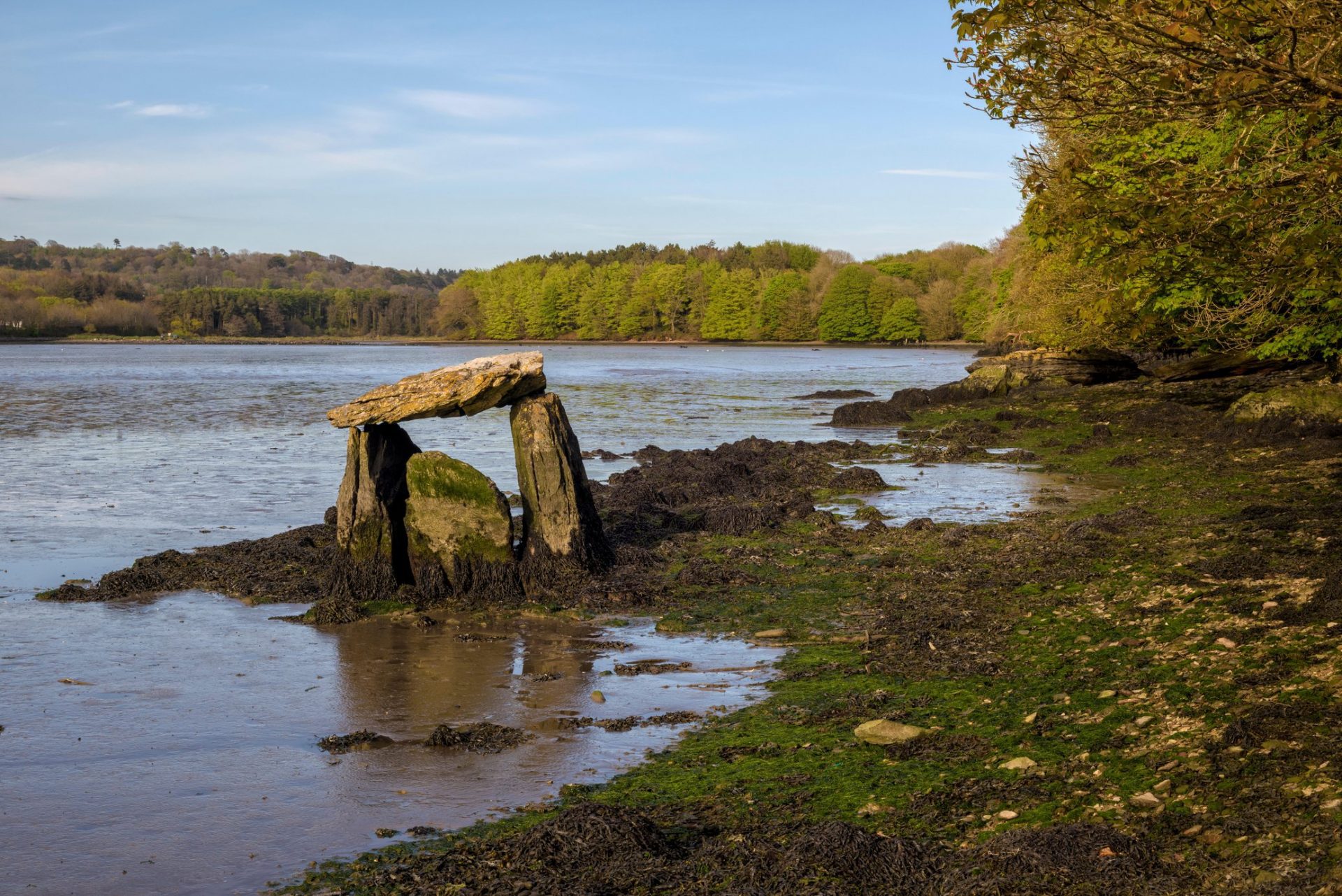The Carraig á Mhaistin stone, a monument thought to be an 18th or 19th century folly has now been identified as an ancient megalithic dolmen.
The structure stands on the eastern shore of Cork Harbour, located in Rostellan Woods, north of the small village of Rostellan in southern Ireland.
During the 18th century, the 1st Marquess of Thomond, Murrough O’Brien, constructed “Siddons Tower”, a mock medieval tower on the former estate of Rostellan Castle. This led to the interpretation that the structure was another of the Marquess’s follies, which is partially submerged during the day by tidal changes in the harbour.
The uncertainty on the provenance meant that the monument was not included in the State’s survey of megalithic tombs of Ireland, conducted over 40 years ago by Professor Ruaidhrí de Valera and Seán Ó Nualláin.
A new study by Connemara-based archaeologist, Michael Gibbons, has now concluded that the monument is a megalithic dolmen, indicating that the small chamber at the tomb structure is situated on the western end of a previously unknown cairn measuring 25m long and 4.5m wide. The cairn is concealed by rising sea levels, which he is now reporting the discovery to the National Monuments Service.
According to Gibbons, monuments such as this occasionally have intact long cairns which are both intended to provide structural support to the chamber itself. The cairn is partially entombed in estuarine mud, with more of the structure likely concealed beneath the surface.
In folklore, portal tombs and dolmens were often called “Diarmuid and Gráinne’s bed”, associated with the Fianna Cycle of Irish mythology that concerns a love triangle between the great warrior Fionn mac Cumhaill, the beautiful princess Gráinne, and her paramour Diarmuid Ua Duibhne.
Source : Irish Examiner
Header Image Credit : Alamy (Copyright)





